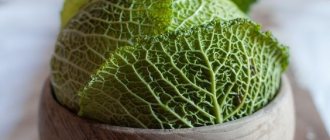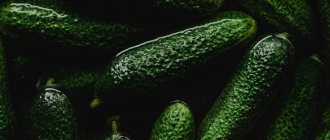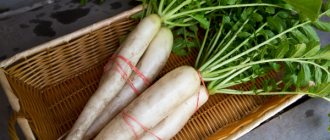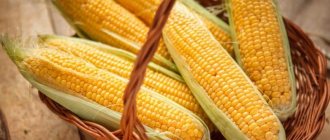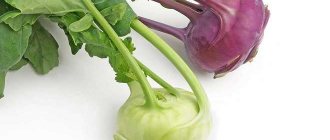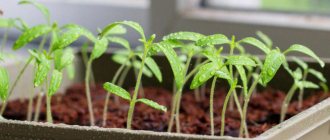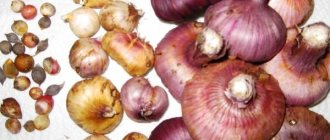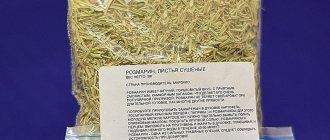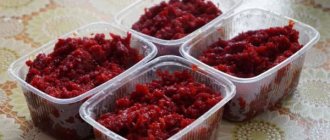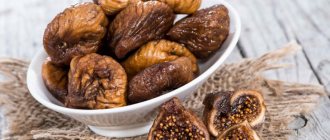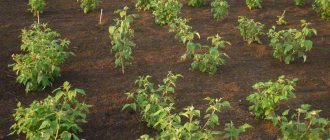When to harvest
How well the onions will be stored primarily depends on the right moment for harvesting.
It is believed that the optimal time for digging onions is from early August to early September. Naturally, the exact period depends on the climatic conditions of the region and whether the summer was dry or rainy. It is not difficult to determine whether a vegetable is ripe: its husk will easily come away from the bulb, and the feathers will dry out and turn yellow.
It is necessary to harvest on a dry day so that rain does not damage the plant. Try to select for long-term storage those specimens that do not have any damage, stains or traces of insects on their surface.
The vegetable must be ripe, otherwise it will quickly deteriorate during storage. An overripe plant should not be used for long-term storage: it begins to sprout roots and new green shoots within a month or two, which means it will become unsuitable for cooking.
Experienced gardeners know that late-ripening varieties are best stored. And early and sweet ones, such as the Yalta variety, are not very suitable for storing for the winter.
The new crop should be stored in a dry and cool place, away from direct sunlight. If the humidity is too high, the bulbs will quickly begin to rot.
You can also grow this plant for the next season using nigella - onion seeds. They are black in color, which is why they got their name. It is necessary to wait until the plant is completely ripe, and then cut off the inflorescences and leave them to dry. It is better to store arrows with seeds in a dry place: this way they will be easily separated.
Read more about methods of growing onions in our article.
Diseases arising during storage
Infection of onions occurs during the growing season. Fungi and bacteria that have penetrated the tissue multiply during storage. Infected heads rot, soften, and themselves become a source of infection. During storage, most of the crop is destroyed.
Wet bacterial rot
At first the head looks healthy. She begins to rot from the inside. This can be seen in the cut. Some layers are rotten (brown, soft), others are still intact. The disease is caused by Erwinia carotovora Bergey, a bacterium that lives in soil and plant debris. A diseased bulb can be identified by a large pinkish spot in the neck area and an unpleasant odor.
White rot
During preparation for storage, it is easy to identify fungus-infected heads. On their bottom you can see mycelium. It is white in color and resembles cotton wool. First, the infection affects the outer scales, then penetrates inside. As a result, the bulb rots.
Fusarium
The Fusarium fungus lives in soil. Through damage caused by pests and tools during digging, it penetrates into tissues and multiplies intensively in conditions of high humidity. The fungus is active at air temperatures of +13…+30 °C. In infected bulbs, the bottom becomes overgrown with mycelium, rots, and the tissue becomes soft and watery.
Preparation for storage
In order for the onion to last all winter and retain its freshness, the plant must be properly prepared before placing it in a storage location. This basically involves drying the bulbs. Any room where there is natural ventilation is ideal for these purposes - for example, a veranda or even a dry place in the shade outside. Often an attic is used to dry the crop, where a window can be opened to provide the necessary air circulation.
The bulbs should be laid out on cloth in one layer so that they do not touch each other, and left for 7–10 days.
When choosing a place for drying, keep in mind that the onions should not be exposed to the sun. If you keep the crop outside, then bring it indoors at night so that it does not pick up moisture from the air and does not get caught in unexpected night rain.
After the bulbs have dried, it is necessary to remove the remaining soil from them. This must be done manually, without using water. You should also cut off the roots and top, leaving a neck of about 5 centimeters.
Attention! When you put the onions in storage, do not forget to periodically sort them and make sure that they do not sprout.
Carefully sort through the harvest. Specimens with damage, soft ones, or those that still have green sprouts are not suitable for long-term storage.
Do not leave onions without peels for a long time: without them, they will quickly deteriorate and should be used for food as soon as possible.
Preparing vegetables
In order for the onions to be stored longer, it is important to properly prepare them for packaging in containers. You need:
- Go through the onions, be sure to distribute them by size and variety. You also need to carefully inspect all the bulbs and throw away those that have cuts or rot after digging up - they will deteriorate very quickly.
- Next, you should dry the crop. To do this, you will need to lay out the bulbs on sheets of cardboard on the balcony or in any other place where there is a lot of sunlight and heat. If it is not possible to place the crop in this way, you can collect the bulbs in small bundles and hang them on the windows. Yalta onions are often dried in this way.
- Once the bulbs are dry, you will need to prune them. Dried leaves should be removed, leaving only 4-5 centimeters of the onion neck. Next, you will need to remove the remaining soil from the bulbs, as well as remove cracked scales. After this you will need to dry the onions.
- After two weeks, the crop will need to be re-sorted, discarding samples with green roots, sprouted bulbs, and specimens with open necks. Only perfectly dried, even bulbs can be stored in a special container for storage.
After this, the bulbs should be treated with chalk or husks. This product will absorb moisture and prevent the bulbs from rotting. You can also use special biological preparations to treat such a crop - they will not harm it and will not in any way affect its taste. Only after this can the bulbs be put away for the winter in special bags or boxes.
At what temperature should it be stored in the cellar and apartment?
Most often, onions are stored either in basements or in apartments.
- In the cellar
The optimal temperature for long-term storage of onions in the cellar is about 0 degrees Celsius for semi-sweet types and about -3 for spicier ones.
The ideal humidity for this type of vegetable is about 80%.
- In the apartment
If you decide to store onions in an apartment, then choose a room for it where the temperature is about 20 degrees Celsius and the humidity is around 70%. Good ventilation is also important for the onion, otherwise it will “suffocate” and begin to rot. If the air in your home is too dry, cover the crop with prepared husks. If, on the contrary, the humidity is very high, you should add special absorbents to the containers with onions, which will absorb its excess. Typically sawdust or ash is used for these purposes.
Varieties suitable for long-term storage
The keeping quality of onions depends on the period of physiological dormancy of a particular variety: the longer it is, the “hardier” the vegetables are. Varieties with dense bulbs and a sharp taste are suitable for long-term storage:
- 'Bessonovsky';
- 'Arzamas';
- 'Spassky';
- 'Strigunovsky';
- 'Rostov onion'.
Semi-sweet varieties are stored indoors until February. Among them the most famous are:
- 'Belozersky';
- 'Krasnodar';
- 'Danilovsky';
- 'Samarkand';
- 'Mechkovsky';
- 'Markovsky'.
How long can you store
Under conditions where all storage recommendations are followed, onions can last for about 6 months. Then it begins to sprout.
If you decide to chop the onion and freeze it in this form, then it can be in the freezer and not lose its taste and beneficial properties for up to six months.
Sweeter onion varieties can be stored for no more than 4-5 months.
Dried onions placed in a vacuum can last for about a year.
Storage conditions for onions
To prolong the safety of harvested onions, it is necessary to provide certain conditions. These include temperature and humidity in the room - both indicators are interrelated.
There are 3 options for storing vegetables:
- Cold method at a temperature of -3-0 degrees. This is the best variant. In such conditions, the crop is stored for as long as possible.
- Warm method at a temperature of 18-22 degrees. Air humidity in this case should be 60-70%.
- Combined method . First, the crop is stored at a temperature of 18-22 degrees, and when stable cold weather sets in, it is cooled and switched to the cold method. In spring and during thaws they return to the warm method.
When using a cold storage method, do not leave the onions in the heat for a long time. It is worth taking small amounts of it for food.
When choosing a suitable temperature regime, you need to take into account the type of onion. As its severity increases, the recommended storage temperature decreases.
The place for storing onions should be dry and well ventilated. Ventilation can be natural or forced. In the second case, it is important to monitor the proper functioning of its operation. There should be no heat sources nearby.
It is important to store onions in the correct container. It must be breathable. The height of boxes, crates or baskets should be up to 30 cm. The same condition applies to other containers - the layer of onions should also not exceed 30 cm. It is worth giving preference to small containers so that in case of spoilage, less crop will be damaged.
When storing onions, it is also important to observe the following conditions:
- periodic inspection of raw materials with rejection of damaged copies - 2-3 such checks are enough for the entire period;
- avoiding storing onions together with crops that require higher indoor humidity;
- when storing in boxes and other containers, they should not be tightly closed - this increases the level of humidity and provokes rotting;
- eliminating strong and frequent temperature changes in the room.
Spicy and early ripening onions are stored better. Salad and semi-sharp varieties have an average shelf life.
How to store
Secrets and recommendations for storing onions are passed down from generation to generation. In this article I have collected the most successful and reliable options for you.
Braids
If you plan to store your harvest in braids, then after harvesting it, do not cut off the sprouts: you will need them for braiding. Braids are convenient because they allow you to save space and hang the plant, providing it with ideal ventilation. In addition, a braid made of multi-colored onions is a real decoration for a country house interior.
Wooden boxes
Boxes are great if you have a large harvest of onions and don't want to waste time braiding them into separate braids. The boxes can be stacked on top of each other to save space and can be easily moved from place to place. Wooden containers are usually used, which allow the crops in them to have good ventilation.
If you keep the boxes on the balcony, then do not forget to monitor the temperature in winter: as soon as it drops below zero, it is better to bring the crop into the house.
Wicker baskets
If you need a few onions to always have on hand in your kitchen, you can place them in a small wicker basket. Vegetables will be provided with air circulation, and their husks will not scatter throughout the kitchen.
Carton boxes
If you don't have wooden boxes, you can use regular cardboard boxes instead. The principle of storage in them is the same, the main thing is not to forget to make holes in the walls for air circulation.
Nylon tights
This retro method of storage has the right to life even now. The fact is that nylon tights have many holes that allow air to pass through. They are also easy to place bulbs in and hang them. So if you have old tights, instead of throwing them away, you can give them a second life and use them for harvest storage in your basement or garage.
Plastic mesh
Onions are often sold in special plastic nets. Don't rush to throw them away - you can reuse them. Such packaging allows you to notice in time if any bulb has begun to deteriorate, and also provides good air exchange.
It is better to store onions in nets during transportation or for a short time.
Packages
Plastic bags are not suitable for long-term storage of vegetables. The crop will quickly begin to rot in them due to lack of air. Keep onions in this container only if you are sure you will use them for food within a few days.
General rules
How to prepare onions for winter storage?
To prevent the onion's shelf life from being affected, dig up and clean the vegetables from the soil as carefully as possible. There is no need to forcefully pull out or tear off the tails and roots.
First, leave the entire onion to air dry in sunny weather until the evening . This can be done at home on the balcony or directly on the floor, laying out supplies on dry paper towels or parchment.
In a heated house, you can move the onions closer to the radiator, so the process will noticeably speed up. Then, using a knife or pruning shears, cut off the green tails, leaving 3-5 cm. It is better not to touch the roots.
Several top layers of dried skin can be removed, and then left to dry for the final 1-2 weeks, stirring and sorting every couple of days.
How to store onions after harvesting ? This pre-drying will maximally prepare the onions for long-term storage.
At what temperature should onions be stored ? If the onions are stored in one of the rooms of an apartment or country house, find a secluded place for the onions, where the temperature is no higher than +15-18 °C.
The spicier the onion variety, the lower the temperature should be. For example, sharp and semi-sharp varieties of onions like Timiryazevsky, Svirsky or Aleko should be stored at -3 °C. For sweet and semi-sweet varieties like Exhibition, Sterling F1 or Globo, zero temperature is suitable.
Which onion varieties are best suited for long-term storage ? Semi-sharp and salad varieties have medium shelf life. Therefore, predominantly sharp and early-ripening types of onions are perfect for long-term storage. Among them, the champion of long-term storage is the hot onion. These are “Stuttgarter Risen”, “Centurion”, “Orion”, “Sturon”.
Of the red varieties, “Bombay”, “Carmen”, “Brunswick” and “Red Baron” are well preserved. They have good shelf life and a rich composition of nutrients. Golden onions keep well, followed by white and purple ones. The Dutch variety "Texas Yellow" is specially bred to be highly resistant to rot.
How to store onions for the winter ? Check the onion by touch - if it is firm, dry, and completely protected by dry golden-orange skin, then you can safely store it.
Do not throw all the onions, even completely healthy ones, into one pile. Small bulbs must be stored separately from large ones, just as different varieties must be sorted into their own packages.
Recommendations for storage in the basement
Experienced gardeners know that the best place for long-term storage of crops is in the basement. To ensure that your harvest pleases you for as long as possible, prepare wooden boxes in advance. The boards must be dry, free from mold and insects. It is also necessary to leave a certain distance between the boards for air circulation.
Onions can be placed in boxes in layers, but not more than 30 centimeters in height.
If the floor in your basement is earthen, then the boxes should be placed on boards or special pallets, and not directly on the ground, so that the crop does not absorb excess moisture.
If you don't want to use crates or boxes, you can hang onions from the ceiling: onion braids or small bags are ideal for this.
When to stop watering onions
In order to store the onion harvest for as long as possible, you need to properly care for it during the season and stop watering it on time. A couple of months after planting in the beds, the plants stop growing, and sucrose and other nutrients begin to actively accumulate in the heads. Irrigation is no longer required at this time, since excess moisture will only delay the ripening of the bulbs. Even varieties with a high shelf life completely stop watering in July.
By the beginning of July, the feathers of the plant fall to the ground, the scales on the heads dry and acquire a golden color. This indicates the ripening of the bulbs. According to folk customs, watering of onion beds is stopped on the Feast of Peter and Paul, which is celebrated on July 12. If rainy weather sets in or you continue to irrigate the beds, it will be difficult to preserve the onion harvest at home.
Varieties of onions
There are many types of onions, and they are all tasty and healthy. I'll tell you how to store the most popular ones.
Green onions
Young green onions are ideal for salads, soups, and as a topping for main courses. But it must be fresh and juicy. To do this, I recommend that you first wrap it with a cloth soaked in water, then with paper and place it in the compartment of the refrigerator intended for storing vegetables and fruits. This simple method will allow you to keep your greens fresh for 10 days.
If you plan to use the cut green sprouts almost immediately, you can place them in a small jar of water to prevent them from losing moisture.
Leek
It is believed that leeks can be stored for quite a long time without losing their taste properties. To do this, pour a little sand - about 5 centimeters - onto the bottom of a wooden box, then put one layer of onion, sprinkle it with sand again, and so on. The top of the entire crop must also be covered with sand.
If everything is done correctly, then leek can retain its properties and taste for about six months at a temperature of about 0 and a humidity of 80%.
Sevok
Many summer residents prefer to take care of what they will plant in their garden beds in the spring. Therefore, many people store onions not only for food, but also as material for later planting.
Seed bulbs are small in size and should be kept at a temperature of at least 15 degrees.
Red (Yalta) variety
The red onion variety is famous for its sweet, more delicate taste. Unfortunately, this type of plant is less suitable for long-term storage than its golden counterparts. It is best to keep it in braids. The shelf life in this case does not exceed 4-5 months.
Possible causes of onion spoilage during storage, preventive measures
Spoilage of onions during storage usually implies rotting. The reasons may be different:
- disease - most often it is a fungal or bacterial infection, the symptoms of which appear during storage;
- increased humidity in the room;
- improper packaging - tightly closed containers, use of polyethylene;
- abuse of nitrogen-containing fertilizers - this brings the harvest time closer, but has a negative effect on the duration of its storage.
The following measures will help avoid damage to the crop during storage:
- processing of planting material in spring - it is optimal to use a solution of potassium permanganate;
- moderate use of fertilizers, proper potassium fertilizing - they increase the shelf life of the crop;
- care when harvesting - infection often occurs due to mechanical damage;
- careful screening and elimination of damaged specimens;
- complete drying of the crop;
- preparing the premises for storing the crop - completely drying it, disinfecting it;
- ensuring good ventilation;
- maintaining the recommended temperature and humidity levels;
- use of breathable storage containers;
- periodic inspection of stored crops with rejection of damaged specimens.
You can learn about the features of storing onions from the following video:
Compliance with all the rules for storing onions will allow you to keep them in good condition for as long as possible. This can be done both in an apartment and in the presence of a basement or cellar. It is especially important to preserve the harvest if part of it is intended for planting next year.
0
0
Copy link
Pickled onion
If desired, the onions can be pickled. This way you will not only save it, but also get a ready-made snack or addition to a salad or barbecue.
Select small onions or simply cut large ones into halves or quarters.
You will need:
- onion – 1 kg;
- olive oil – 500 ml;
- table vinegar – 500 ml;
- salt – 1 tablespoon;
- sugar – 50 grams;
- bay leaf – 1-2 pieces;
- black pepper - several grains;
- dill.
Pour water into the medium-sized onion in the peel and bring to a boil. As soon as the water boils, transfer it to a colander and place under cold water.
Peel the bulbs and leave in cold water.
To prepare the marinade, mix vinegar, salt, sugar, bay leaf and pepper in a saucepan and bring to a boil. Add oil and onions to the marinade. Reduce heat to low, cover and let simmer for 10-15 minutes.
Then remove from heat and distribute into clean jars, adding a little dill to them. Close the lids tightly.
How to properly harvest onions and harvesting dates
It is important to harvest onions correctly and promptly after the harvest has ripened. When harvesting is delayed, when the bulbs are left to ripen in the garden plot, the yield level increases. But the quality of the harvest itself deteriorates significantly. The fruits crack and the scales peel off. Such onions are poorly stored. It is impossible to preserve onions in this condition in winter.
Onion harvest photo
It is important to carefully inspect the bulbs to ensure there are no pathogenic bacteria, fungi and other microorganisms. When collecting large bulbs, it is worth considering that they take a long time to dry, so it is preferable to store only dry fruits to avoid rotting. If this condition is met, you can safely store onions until spring.
In the freezer
In the freezer, the shelf life of onions increases to a year. At the same time, the greens practically do not lose their beneficial properties, but their taste characteristics slightly deteriorate .
It becomes less flavorful and less crunchy after defrosting. Onions can be stored in the freezer either as whole feathers or in chopped form.
In plastic bags
You can store whole greens in the bag. Proceed as follows:
Soak the feathers in warm water for 3 minutes, then rinse gently.- They cut off their roots, if any.
- Shake the stems to remove excess moisture.
- Spread the onions in a single layer on a paper towel. Leave until completely dry.
- Wrap the plant in cling film or a bag so that you get a long roll.
- Store in the freezer.
If desired, the onion can be chopped and poured into a bag. At the same time, it must be laid out in an even, thin layer. From such a plate it is convenient to break off pieces of the required size without defrosting the main mass. Do not store herbs in the same compartment as fish and meat.
In ice trays
For the purpose of subsequent heat treatment, onions are prepared in ice trays:
- wash and chop the greens;
- put it in ice trays;
- pour water over the greens, add very little liquid, there should be less of it than onions;
- put the molds in the freezer for several hours;
- take out the frozen onion cubes, put them in bags and send them for permanent storage.
Instead of water, you can pour olive oil over the greens. These cubes are great for seasoning borscht or other first courses.
Containers suitable for this purpose
To keep onions fresh for as long as possible, use suitable containers. These can be glass jars, plastic bags, paper or foil.
Glass containers
You can keep the greens fresh in a glass jar on the refrigerator shelf for a week. The main condition is to put in the container only those feathers that fit entirely into it. If the stem breaks or becomes dented, it will begin to rot.
Polyethylene
You can keep green onions in plastic bags for 1 month. The main condition for such storage is the absence of condensation. To avoid this, make holes in each bag with a needle and keep the plastic container in the refrigerator for a while before sorting the greens.
Paper
Paper wrapping is suitable for storing onions at room temperature or in the refrigerator. Wrap the stems in a layer of craft paper or a thick napkin and secure with thread. Wet the surface and maintain proper humidity during storage. Use only thick paper, as thin paper will tear.
Foil
The onions will keep in foil on the refrigerator shelf for 7–10 days. For the procedure you will need a sheet of foil and a needle. Wrap the prepared stems loosely in foil, sealing all holes. Make 5-10 punctures in the package for ventilation. For convenience, divide the product into portions and wrap each portion in a separate sheet of foil.
